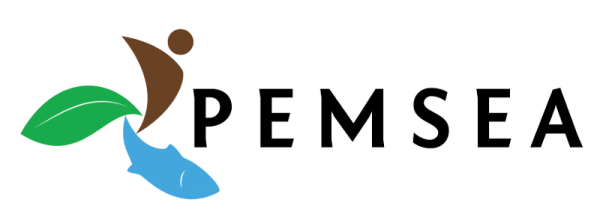Here’s how the SDS-SEA Project generated sustainable livelihoods in communities
Friday, 14 May 2021

When the six-year GEF/UNDP/PEMSEA Scaling Up the Implementation of the Sustainable Development Strategy for the Seas of East Asia (SDS-SEA) Project successfully concluded last December 2020, evidence of the project’s positive socio-economic impacts was evident on the ground.
Sustainable livelihood programs were implemented in 8 Integrated Coastal Management (ICM) sites in 6 countries, including sustainable tourism in Koh Rong, Cambodia; financially sustainable and ecosystem-friendly livelihood activities in Lianyungang, China; alternative livelihood in mangrove conservation in Tangerang, Indonesia; traditional salt-making in Manatuto, Timor- Leste; and replication of community-based fisheries and ecotourism development in Danang, Viet Nam.
Koh Rong, Cambodia

In Koh Rong the development of the Marine Fisheries Management Area (MFMA) has attracted more tourists and contributed to the improvement of local livelihood. A user’s fee or the collection of 8,000 Riel per tourist visiting the island has been implemented to sustainably finance the implementation of the MFMA Management Plan and the overall protection and management of the Koh Rong Archipelago (KRA). A rapid growth of tourists visiting the KRA has brought significant impact to the local communities, especially in Koh Rong Sanloem and Koh Touch villages. A livelihood assessment report done by the SDS-SEA Project reported that a family could earn around USD 1,380 to USD 1,980 annually from tourism-related jobs while tourism service providers could earn from USD 6,000 to USD 12,000 annually. By comparison, income from fishing ranged from USD 1,690 to USD 3,825 annually.
Batangas, Philippines


In Batangas Province the establishment of Mangrove Protected Areas provided livelihood opportunities (i.e. ecotourism, recreation) to coastal communities. Mangroves also serve as sources of food and other marketable products for coastal communities, particularly wood, fish, crabs, clams, bangus (milkfish), and oysters. Most of the coastal residents who earn from mangrove resources from products to aesthetic services are found in the municipalities of Lobo, San Juan, Lian and Calatagan. Local people from the municipalities of Lobo, Lian and Calatagan, are benefiting from Mangrove PAs in terms of ecotourism activities such as educational tours, kayaking or boating, snorkeling, bird watching, and sunset viewing. Other livelihoods derived from the effective management of Mangrove PAs are catering services, making souvenirs, and selling of mangrove seedlings.
Semarang City, Indonesia

Results from the socio-economic identification of coastal communities in Semarang City showed that sources of alternative livelihood income vary. Besides usage of raw material like fish or other sea products, some people have already done business using coastal raw materials. In the village of Tugurejo, beside Putri Tirang, there are people engaged in the sewing business, catering and selling of snacks, aside from processing fish. In Mangkang Kulon village, the community has been doing business through the production of nata de coco, various shrimp and fish-based products, tempeh chips, souvenirs, and batik (made from mangrove waste). The business group also has a good relationship with garbage bank activities in the neighborhood. They process the garbage in the environment, which is then converted into a number of useful items, or sold to several collectors.
Tangerang Recency, Indonesia


Mangrove rehabilitation in Tangerang Regency through its “Gerbang Mapan Program” provides direct value benefits for fishery resources and coastal communities in improving their welfare. From 2015 to 2019, Tangerang Regency has implemented a mangrove rehabilitation program that has planted some 700,000 trees in a 65-hectare area along its coast. This has added value potential in the increase of public income through activities such as mangrove tourism, mangrove nurseries, fishing, cultural tourism, and educational activities.
Liquiça Municipality, Timor-Leste


In Liquiça Municipality income generation can be improved through eco-tourism, and the implementation of ICM should focus on valuing the pristine, cultural, as well as fauna and flora conservation of the coastal areas. Economically, Liquiça has become a strategic place for tourism and daily excursions through its beaches in Ulmera, Maubara, Vatuvou and Vaviquinia. Apart from tourism, fishing (tuna, mackerel, red snapper, grouper, flying fish and skipjack) and aquaculture (tilapia, milkfish, seaweed, trepan, mud crab) are also main activities and a source of livelihood. In Manatuto, traditional salt-making communities have experienced improvement in their weekly incomes. Similar stories were narrated by seaweed growers in Ulmera, wherein seaweed production has gone up and given them more income than ever before.
For more information on the SDS-SEA Project and its impact on sustainable livelihoods, access the PEMSEA 2020 Annual Report here.




